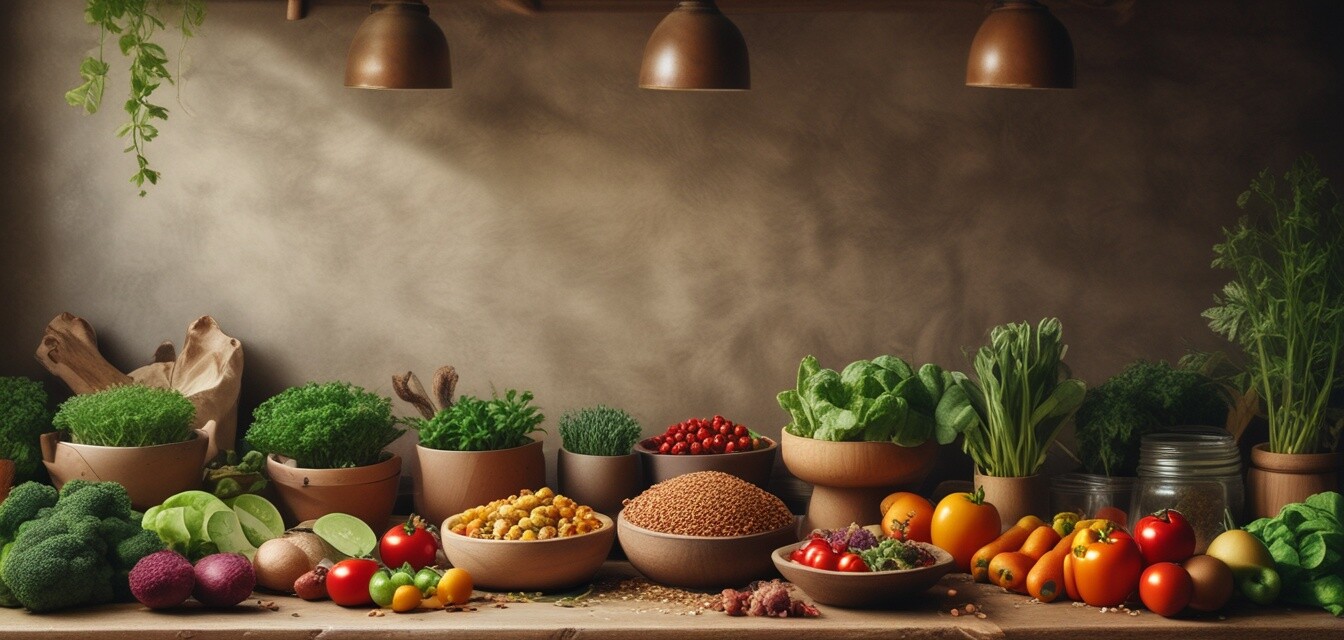
Disclosure: The FTC requires that this article indicate that it was created using AI and is not based on personal experience. It includes affiliate links, which means we may earn a commission if you purchase through these links at no extra cost to you. As Amazon Associates, we earn from qualifying purchases. Product recommendations and endorsements were generated by AI and do not reflect personal opinions or real-world use.
The Rise of Plant-Based Cooking for Groups
Key Takeaways
- The demand for plant-based meals is increasing in group settings.
- Catering for large groups with plant-based options can be cost-effective.
- Utilizing fresh produce enhances the flavor and appeal of dishes.
- Adaptation of cooking methods is crucial for group plant-based meals.
- Investing in appropriate kitchen tools and tableware can streamline the process.
The culinary landscape has seen significant changes in recent years, particularly with the rise of plant-based diets. This trend is not limited to individual consumers; it has permeated the world of catering and cooking for large groups. The versatility, health benefits, and sustainability of plant-based cooking are becoming essential for those organizing events, family gatherings, or large parties. In this article, we will analyze the growing trend of plant-based meals in catering for large groups and provide practical tips to implement these delicious meals effectively.
Understanding the plant-based trend
Plant-based cooking emphasizes recipes that primarily consist of vegetables, fruits, whole grains, legumes, nuts, and seeds. This shift towards a plant-based approach is driven by various factors:
- Health Consciousness: Many individuals are becoming more aware of their dietary choices and how those choices impact their health.
- Environmental Concerns: The environmental footprint of meat production has made people reconsider their meat consumption.
- Cultural Shifts: Culinary practices are evolving, with more chefs and caterers exploring innovative plant-based recipes.
Why cater with plant-based meals?
Catering with plant-based meals offers numerous advantages:
| Advantages | Description |
|---|---|
| Cost-effective | Fruits, vegetables, and legumes are often more affordable than meat and specialty proteins. |
| Healthier Options | Plant-based meals can be lower in calories and saturated fats, promoting overall health. |
| Diverse Flavors | Utilizing different plant ingredients can create a wide array of flavors and dishes. |
| Inclusive Menu | Plant-based options cater to various dietary restrictions, making it easier to accommodate guests. |
Best practices for implementing plant-based meals
When planning a plant-based menu for large groups, consider the following tips:
Helpful Tips
- Plan Ahead: Design your menu ahead of time to ensure a balance of nutrients and flavors.
- Use Seasonal Produce: Seasonal fruits and vegetables are fresher, tastier, and oftentimes cheaper.
- Embrace Variety: Include a range of colors and textures in your dishes to make meals visually appealing.
- Batch Cooking: Prepare meals in large quantities to save time and minimize food waste.
- Innovative Cooking Techniques: Use methods like grilling, roasting, and sautéing to enhance the natural flavors of ingredients.
Essential kitchen tools for plant-based cooking
Successfully preparing plant-based meals for groups requires the right kitchen tools. Here are some essential items you might consider investing in:
| Kitchen Tool | Purpose |
|---|---|
| Large Cooking Pots | Perfect for soups, stews, and large batches of grains. |
| Food Processors | Excellent for making dips, spreads, and chopping vegetables quickly. |
| High-Quality Knives | Good knives make prep work quicker and more efficient. |
| Commercial Griddles | Ideal for cooking larger quantities of vegetables or pancakes at once. |
| Mixing Bowls | Needed for preparing salads and mixing ingredients efficiently. |
Adapting to various settings
Cooking for groups can take place in various settings, from family gatherings to corporate events. It’s essential to tailor your plant-based menu according to the occasion. Here’s how to adapt:
- Buffet Style: For events where guests serve themselves, consider diverse salads, sides, and non-meat mains.
- Plated Meals: For formal settings, create elegant dishes showcasing seasonal produce as the star of the show.
- Food Stations: Set up interactive food stations where guests can assemble their dishes.
Seasonal plant-based menu ideas
Incorporating seasonal ingredients not only enhances flavor but also supports local farmers. Here are a few seasonal plant-based menu ideas to consider:
| Season | Menu Ideas |
|---|---|
| Spring | Fresh asparagus salad, pea soup, and rhubarb crumble. |
| Summer | Grilled vegetable skewers, corn on the cob, and berry parfaits. |
| Fall | Butternut squash soup, roasted root vegetables, and pumpkin pie. |
| Winter | Chili with beans, hearty stews, and warm apple cider. |
Conclusion
As the trend of plant-based cooking continues to grow, catering for large groups with these meals becomes more accessible and appealing. By embracing the myriad flavors and benefits of plant-based ingredients, you can create memorable dining experiences that prepare everyone for a healthier future. Utilize seasonal produce, invest in the right kitchen tools, and remain adaptable to different settings, and you'll be well on your way to becoming a pro at plant-based cooking for groups. For more resources on finding commercial-grade cooking products, check out our [commercial grade cooking products](https://www.cookingforgroups.com/products/commercial-grade-cooking-products).
Pros
- Fresh and vibrant flavors
- Cost-effective for large groups
- Inclusive of various dietary restrictions
- Supports a healthier lifestyle
Cons
- Requires proper planning and preparation time
- Some guests may prefer traditional meat options
- Need for variety to prevent menu monotony
To keep informed on the latest news and trends in the culinary world, check out our latest [blog articles](https://www.cookingforgroups.com/blog/news-and-trends) for more insights.